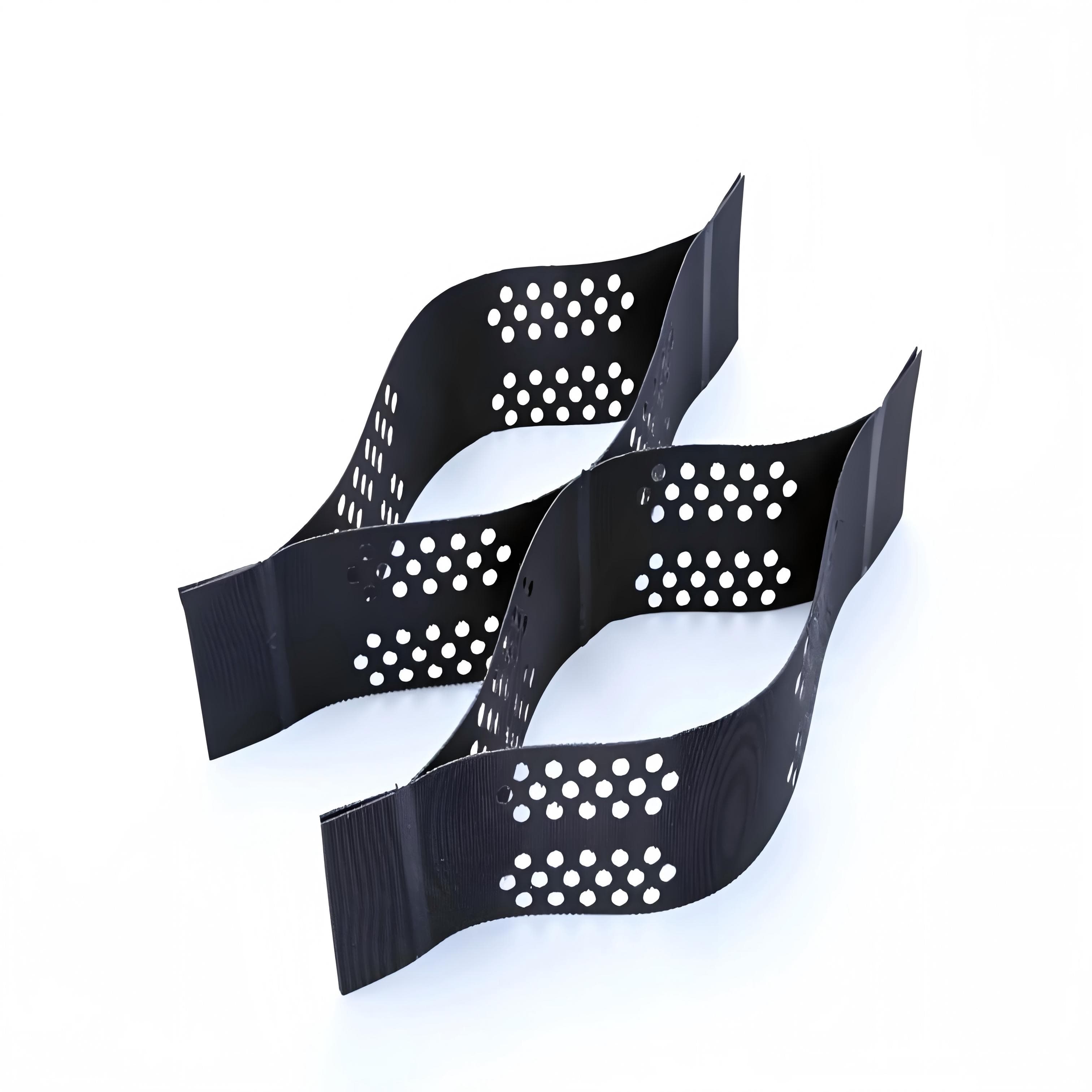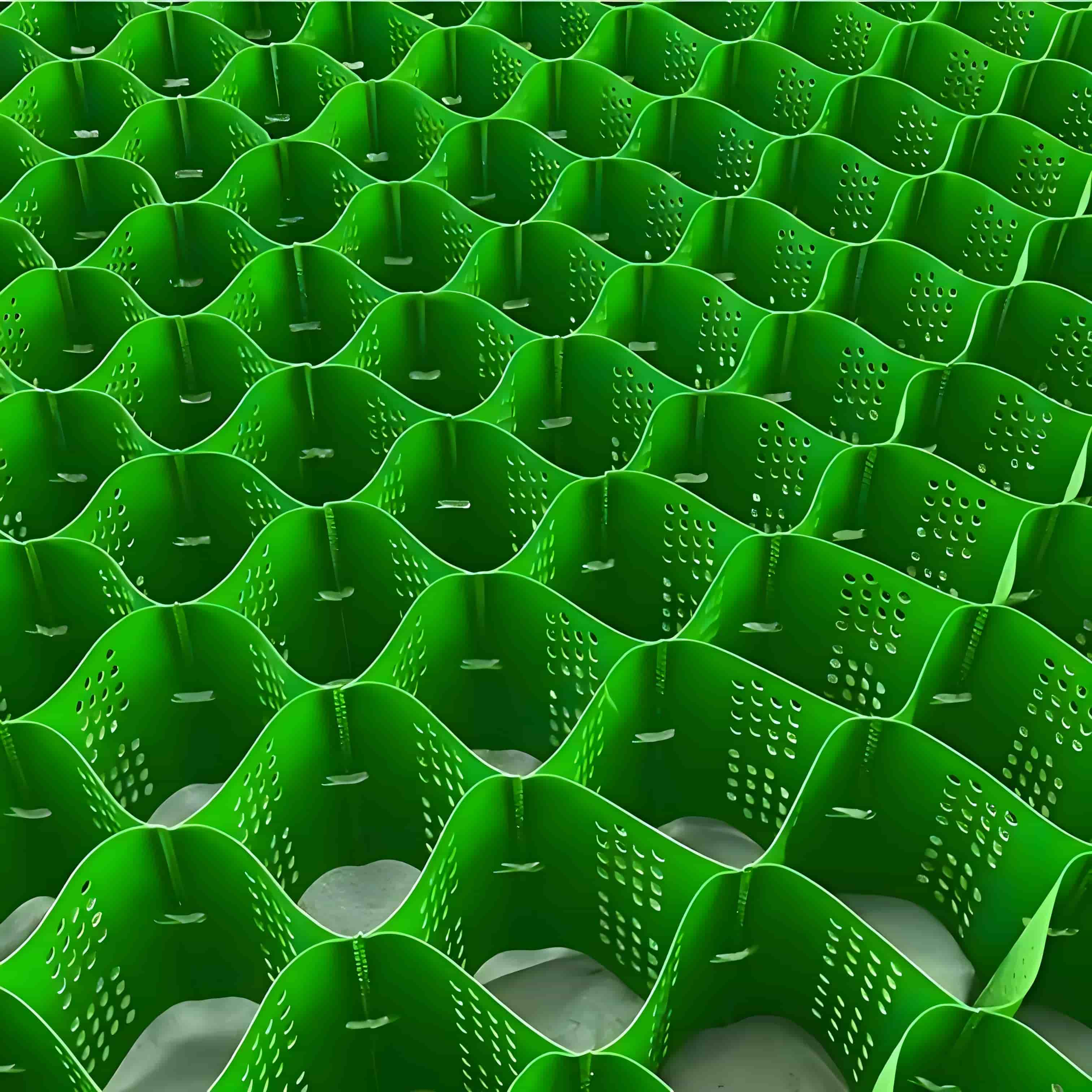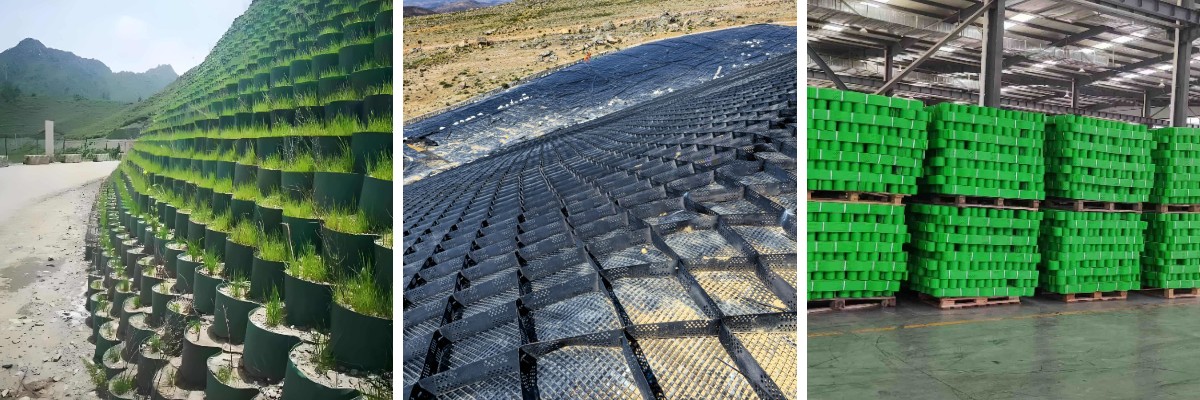Geocell Road
1. High Strength and Stability
The honeycomb design effectively distributes loads, reducing localized stress concentration and enhancing foundation bearing capacity.
2. Superior Erosion and Scour Resistance
The cell compartments can be filled with soil or vegetation, stabilizing surface soil and preventing water erosion, widely used in riverbanks and slope protection.
3. Easy Installation and Cost Efficiency
Modular design allows for easy transportation and manual installation, reducing reliance on heavy machinery.High durability with minimal maintenance requirements.
4. Eco-Friendliness
Supports plant growth within cells, promoting ecological restoration
Product Introduction:
Geocell Road is a three-dimensional honeycomb-like structural material made of high-strength polymers (such as HDPE, PP, etc.) and welded by ultrasonic technology. When expanded, it forms a three-dimensional grid system. After being filled with soil, gravel, concrete, or other materials, it creates a stable reinforced layer. It is widely used in civil engineering for applications such as ground stabilization, slope protection, and road construction.
Product Parameters:
order number | raw and processed material | |||||||
test item | unit | polytene | sulan | polyester | ||||
Extruded type | Stretch type | Extruded type | Stretch type | Extruded type | Stretch type | |||
1 | tensile strength | kN/m | ≥20 | ≥100 | ≥23 | ≥100 | ≥30 | ≥120 |
2 | Tensile yield strain | % | ≤15 | — | ≤15 | — | ≤15 | - |
3 | Tensile fracture strain | % | — | 8~ 20 | — | 6~ 15 | — | 8~ 20 |
4 | Carbon black content a | % | 2. 0~ 3. 0 | |||||
5 | Carbon black dispersion a | — | There should be no more than one level 3 data item in ten data items and no level 4 or 5 data items | |||||
6 | 200℃ oxidation induction time | min | ≥20 | ≥20 | — | |||
7 | Tensile load stress cracking | h | ≥300 | — | ||||
8 | B. Resistance to artificial climate aging retention rateb | % | ≥80 | |||||
9 | Chemical resistance performance retention rate c | % | — | ≥80 | ||||
Product Applications:
Slope Protection
After laying geocells on the slopes of highways and railways, filling with soil and planting vegetation can not only prevent slope landslides through the mechanical support of the geocells, but also reinforce the soil with the roots of the vegetation, achieving the combination of engineering protection and ecological greening.
Subgrade Reinforcement and Protection
In the construction of highway and railway subgrades, laying geocells can enhance the bearing capacity of the subgrade, disperse load stresses, and reduce uneven settlement. For example, in soft soil subgrade sections, by confining the filler particles with geocells, the stability of the subgrade can be effectively improved, and the service life of the road can be extended.
When used in subgrade construction under special geological conditions such as deserts and swamps, geocells can fix sand grains or loose soil masses to prevent subgrade deformation.
Bank and Dam Protection
Laying geocells on the banks and dam slopes, and filling them with stones or concrete can resist the scouring of water flow and prevent bank collapse. The pore structure of the geocells also allows water flow to pass through, reducing the impact of waves on the dam.
River Regulation and Ecological Restoration
When used for the reinforcement of the river bottom or slope, the geocell can fix the soil of the riverbed, prevent soil erosion, and at the same time provide a carrier for the growth of aquatic plants, improving the ecological environment of the river.
Wetland and Slope Ecological Restoration
In wetland protection projects, cellular confinement systems can be used to reinforce the soil at the edges of wetlands, maintain the stability of wetland topography, and create conditions for the growth of wetland plants. In urban slope greening, the combination of cellular confinement systems and hydroseeding technology can quickly achieve slope ecological restoration.
Foundation Treatment for Parking Lots and Squares
Laying geocells on large - scale sites such as municipal parking lots and squares can enhance the bearing capacity of the foundation, prevent road surface cracking, and is especially suitable for areas with frequent passage of heavy - duty vehicles.
Reinforcement of Abutment and Retaining Wall Foundations
Laying geocells on the back wall of the abutment and the foundation of the retaining wall can reduce foundation settlement, improve structural stability, and reduce the post - project maintenance costs.
The core advantage of the geocell lies in its three - dimensional constraint effect - restricting soil displacement through the grid structure, enhancing the overall strength. At the same time, it also has the characteristics of convenient construction, controllable cost, and environmental friendliness. With the development of new material technologies (such as polymer composite materials and biodegradable materials), its application scenarios will be further expanded towards high - performance and green directions. Especially in ecological engineering and infrastructure projects under complex geological conditions, there is huge market potential.












